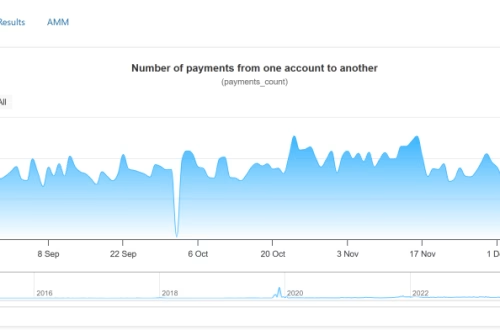Crypto Trading Bots for Passive Income
Summary:
Crypto trading bots are automated software programs designed to buy and sell cryptocurrencies on behalf of users, aiming to generate passive income with minimal manual involvement. These bots utilize predefined algorithms based on technical indicators, market trends, or AI-driven predictions to execute trades 24/7. For beginners in the AI and crypto space, trading bots offer an accessible way to participate in volatile markets without needing deep expertise. However, while they can enhance efficiency and profitability, risks such as market unpredictability and faulty strategies must be considered. Understanding how these bots work, their benefits, and potential pitfalls is crucial for anyone looking to leverage them for passive income.
What This Means for You:
- Automated Trading for Busy Individuals: Crypto trading bots allow you to capitalize on market opportunities without staring at charts all day. If you lack time but want exposure to crypto, bots can handle trades while you focus on other commitments.
- Lower Emotional Trading Mistakes: Bots follow strict rules, avoiding impulsive decisions driven by fear or greed. To maximize effectiveness, backtest your chosen bot strategy against historical data before deploying real funds.
- Diversification Without Overextension: Advanced bots can trade multiple assets simultaneously, reducing reliance on a single coin. Consider allocating only a portion of your portfolio to bot trading to minimize downside risk.
- Future Outlook or Warning: As AI evolves, trading bots may become more sophisticated, but regulatory scrutiny around automated crypto trading is also increasing. Be wary of scams—many “guaranteed profit” bots are fraudulent. Always research providers thoroughly and start with small investments.
Explained: Crypto Trading Bots for Passive Income
What Are Crypto Trading Bots?
Crypto trading bots are software programs that interact with cryptocurrency exchanges via APIs to automate buying and selling based on predefined parameters. These bots can execute trades at high speeds, react to market fluctuations instantly, and operate continuously—even when the user is offline. Popular strategies include arbitrage (exploiting price differences across exchanges), trend-following (buying when prices rise, selling when they fall), and grid trading (setting buy-sell orders within a fixed price range).
Types of Crypto Trading Bots
The bot landscape is diverse, catering to different skill levels and goals:
- Arbitrage Bots: These capitalize on price discrepancies between exchanges, though diminishing arbitrage opportunities and withdrawal fees can reduce profitability.
- Market-Making Bots: Designed to provide liquidity by placing simultaneous buy and sell orders, earning small spreads repeatedly.
- AI-Powered Bots: Use machine learning to analyze vast amounts of data, adapting strategies based on evolving market conditions.
- DCA (Dollar-Cost Averaging) Bots: Automatically buy assets at regular intervals, smoothing out volatility over time.
Benefits of Crypto Trading Bots
The primary advantages include:
- 24/7 Market Participation: Unlike humans, bots never sleep, capturing opportunities even during off-hours.
- Speed and Precision: Bots execute trades in milliseconds, crucial in crypto’s fast-moving environment.
- Emotion-Free Trading: Removing psychological biases can lead to more disciplined decision-making.
- Backtesting Capabilities: Most platforms let users test strategies against historical data to refine performance.
Limitations and Risks
Despite their appeal, trading bots have notable downsides:
- Market Risk: No bot can predict black swan events like exchange hacks or regulatory crackdowns.
- Over-Optimization: A strategy too tailored to past data may fail in live markets.
- Technical Failures: Bugs, API errors, or server downtime can result in missed trades or losses.
- Scams and Fraud Many bot providers exaggerate returns or disappear with users’ funds.
How to Get Started Safely
For beginners:
- Choose a reputable bot provider (e.g., 3Commas, Cryptohopper) or build your own with open-source frameworks like Freqtrade.
- Start with paper trading (simulated funds) to test strategies risk-free.
- Allocate only discretionary capital—never funds you can’t afford to lose.
- Monitor performance regularly and adjust parameters as needed.
The Role of AI in Modern Trading Bots
AI-driven bots analyze sentiment (via news/social media), identify complex patterns, and adapt to shifting volatility. However, they require substantial computational power and quality data inputs. Tools like TensorFlow and PyTorch enable developers to create predictive models, though expertise is necessary to avoid overfitting.
People Also Ask About:
- Are crypto trading bots profitable? Profitability depends on strategy, market conditions, and execution. While some users report consistent gains, others incur losses due to poor setup or unpredictable volatility. Backtesting and starting small are essential before scaling.
- How much does a crypto trading bot cost? Costs vary widely. Open-source bots are free but require coding skills. Subscription-based services range from $20–$500/month, while custom-built solutions can cost thousands upfront.
- Can trading bots replace manual trading? Bots excel in execution speed and tireless operation but lack human intuition for macro trends or unique events. A hybrid approach—bots handling routine trades, humans managing exceptions—often works best.
- What exchanges support trading bots? Most major exchanges (Binance, Kraken, Coinbase Pro) offer API access. Check rate limits and supported endpoints before selecting a bot.
- Is crypto bot trading legal? Generally yes, but regulations vary by jurisdiction. Automated trading may face restrictions in regions like the EU under MiFID II. Consult legal advice if uncertain.
Expert Opinion:
Crypto trading bots can be powerful tools but are not magic money-makers. Success hinges on robust risk management, realistic expectations, and continuous optimization. Avoid overly complex strategies as a beginner—simplicity often outperforms in volatile markets. Additionally, prioritize security; use two-factor authentication (2FA) for exchange APIs and never share API keys with untrusted parties. The industry is shifting toward AI-integrated bots, but their effectiveness remains unproven in extreme conditions.
Extra Information:
- Investopedia’s Guide to Crypto Trading Bots: A comprehensive primer on bot types and selection criteria.
- Freqtrade GitHub: Open-source bot framework for Python developers, ideal for customization.
- CoinDesk’s Trading Bot Coverage: News and analysis on evolving bot technologies.
Related Key Terms:
- best AI crypto trading bots for passive income
- how to build a crypto trading bot with Python
- safe arbitrage bots for Binance and Coinbase
- automated DCA strategy for Bitcoin 2024
- crypto grid trading bot tutorial for beginners
- top-rated free trading bots for Ethereum
- risks of using leverage in algorithmic crypto trading





